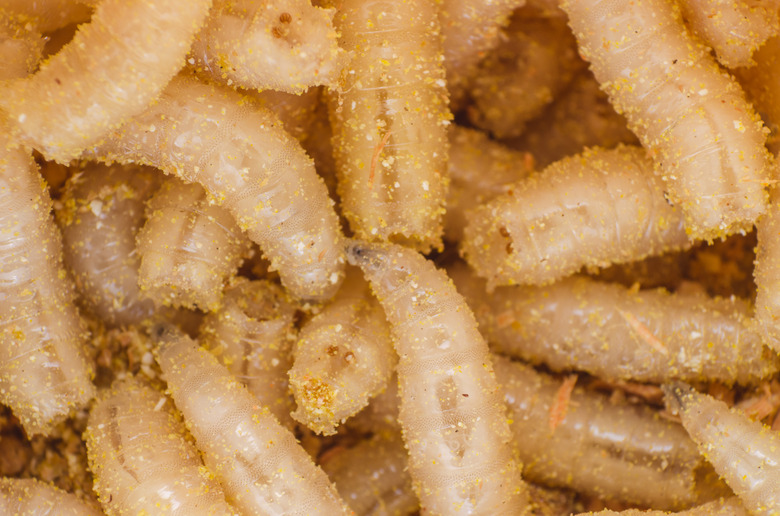What Causes Maggots
The thought of maggots may make your skin crawl, but these legless, worm-like creatures are actually part of the life cycle of a common insect, the house fly. Maggots may be seen in compost, manure and other decomposing organic material because that's the kind of environment the female house fly deems suitable for her eggs.
House Fly Life Cycle
House Fly Life Cycle
The basic house fly life cycle starts with an egg, which develops into a larva, then a pupa and then finally becomes an adult fly. After a male house fly fertilizes a female house fly, she's ready to lay eggs. She chooses a place that's safe from predators and that offers ample food for her offspring when they hatch, typically among organic matter. Within a day of being laid, the egg begin to hatch, producing the first larvae. These are what you commonly think of as maggots. They are fleshy tubes with hooked mouth parts for feeding.
Within a couple of days, a maggot doubles in size. It goes through a process known as molting, where it sheds its exoskeleton and forms a new one. A maggot molts three times in total, becoming bigger and more developed each time. After its third molt, a maggot makes its way further into the organic matter it's been feeding on. Its skin gets darker and forms a protective shell, and it enters the pupa stage, during which it fully develops into an adult house fly.
Effect of Maggots
Effect of Maggots
Maggots are unpleasant, but there's no evidence that they cause pose any health risks to humans. If you have maggots in your trash or your home, pour boiling water with a small amount of bleach over them. After the trash is emptied, clean your trash can out with disinfectant or bleach and lots of water. Use a fragranced cleaning product to discourage flies.
Keep Maggots at Bay
Keep Maggots at Bay
Maggots may be part of a natural life cycle, but it's not particularly pleasant to see dozens of them swarming all over your household waste. To reduce the risk of maggots, keep flies away from your trash. Rinse polystyrene food trays and other food packaging that can't be recycled before you put it in the trash to reduce bad odors. Double-wrap food scraps, pet waste and diapers, disposing of solid diaper waste down the toilet first. Squeeze the air out of trash bags and tie them tightly. If possible, don't leave your trash in direct sunlight and always ensure the trash lid is securely closed; swing lids are more likely to let flies in. Remember, flies can lay eggs on exposed food, so never leave food uncovered inside the home, including pet food.
Cite This Article
MLA
Gillespie, Claire. "What Causes Maggots" sciencing.com, https://www.sciencing.com/causes-maggots-5135373/. 10 April 2018.
APA
Gillespie, Claire. (2018, April 10). What Causes Maggots. sciencing.com. Retrieved from https://www.sciencing.com/causes-maggots-5135373/
Chicago
Gillespie, Claire. What Causes Maggots last modified March 24, 2022. https://www.sciencing.com/causes-maggots-5135373/
